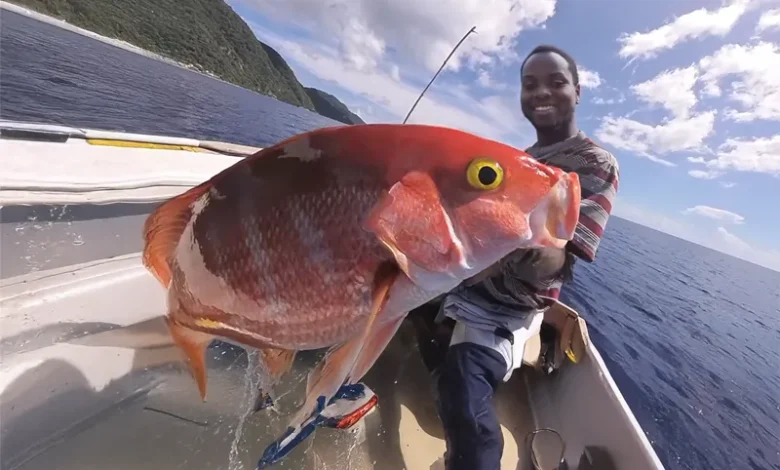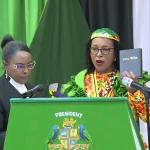Fishing in Dominica

Fishing in Dominica is more than just a traditional practice; it’s a cultural experience, recreational pastime, and a vital food source for many communities. Unlike the fisheries sector, which focuses on commercial production, exports, and industry regulations, this page highlights the everyday fishing practice—whether for leisure, family meals, cultural rituals, or sport competitions. From casting lines in quiet rivers to reeling in big game fish off the coast, fishing is woven into life across the island, combining generational knowledge, natural abundance, and modern recreational appeal.
A Tradition Rooted in History
Fishing has been practiced for centuries, from the Kalinago people who perfected canoe fishing and reef harvesting to enslaved Africans who relied on rivers, mangroves, and coasts for supplemental food and survival. In villages like Soufriere, Scotts Head, Portsmouth, and Marigot, fishing skills were passed down through families, blending African, indigenous, and European techniques into a distinctive island fishing culture. While modern tools such as fiberglass boats and motorized engines have been introduced, handline fishing, seine netting, and fish pot setting remain part of everyday life.
Popular Types of Fish in Rivers and Coastal Waters
Dominica’s rivers, freshwater lakes, and marine zones are home to a wide variety of fish, attracting both subsistence fishers and recreational anglers. In the rivers, popular catches include tilapia, river mullet, freshwater crayfish, Titiwi, and mountain mullet. These species thrive in the fast-flowing streams of the island’s volcanic terrain, particularly in areas like Layou River, Indian River, and Hampstead River.
In nearshore waters, fishers commonly catch snapper, parrotfish, grouper, grunts, and jacks, while offshore waters offer prized species such as yellowfin tuna, wahoo, mahi-mahi, kingfish, and marlin. Many of these larger pelagic species are popular with sport fishers, who enjoy tournament-style excursions targeting record-breaking catches off the island’s western and southern coasts.
Best Locations for Fishing
River Fishing Spots
- Layou River is known for tilapia and mullet, with excellent access for local anglers and visitors.
- Indian River offers fishing opportunities and eco-tours, making it a dual-purpose attraction.
- Pagua River: A hotspot for freshwater fish, especially after the rainy season when water flow increases.
Coastal and Offshore Fishing
- Soufriere Bay: Ideal for handline fishing and reef fishing, with easy access to deeper waters.
- Portsmouth: A popular base for deep-sea charters, offering proximity to productive offshore fishing grounds.
- Scotts Head: Known for spearfishing and traditional seine fishing, especially during cultural festivals.
Seasonal Impact and Hunting Seasons
Fishing in Dominica is influenced by weather patterns, especially during Dominica’s hurricane season, which runs from June to November. Rough seas often restrict offshore excursions, while river fishing can become dangerous after heavy rains cause flooding. Certain species, such as lobster and conch, are also subject to closed seasons, regulated by the Fisheries Division, to allow for spawning and population recovery.
Cultural Festivals and Fishing Traditions
The Feast of St. Peter, the patron saint of fishermen, is one of the most important cultural events tied to fishing. This festival, held annually in June, brings blessings of fishing boats, community celebrations, and fishing competitions, reinforcing the spiritual and cultural connection between fishing and identity.
Government Support and Relevant Organisations
While fishing as a recreational and cultural activity falls mostly under community traditions, the Fisheries Division of the Ministry of Agriculture, Fisheries, Blue and Green Economy still supports conservation, safety, and public awareness. The Division works with coastal community councils to promote safe fishing practices, marine education, and the preservation of fish stocks.
In addition, fishing cooperatives, particularly in areas like Marigot, Roseau, and Portsmouth, provide small grants, gear storage, and training opportunities for subsistence and sport fishers. Groups such as the Goodwill Fishermen’s Cooperative and the Soufriere Fishermen’s Cooperative serve as community hubs, facilitating knowledge sharing and organizing events like village fishing derbies.
Sport Fishing and Eco-tourism
While traditional fishing is deeply cultural, sport fishing has become part of eco-tourism efforts, attracting local enthusiasts and visiting anglers. Several charter companies operate deep-sea fishing tours, where tourists can target big-game fish while experiencing Dominica’s dramatic seascapes. These tours often combine fishing excursions with marine wildlife viewing, offering sightings of dolphins, whales, and endangered sea turtles, enhancing the eco-tourism appeal.
Spearfishing guides offer visitors the chance to experience traditional underwater hunting, combining thrill-seeking with cultural learning in areas like Soufriere and Scotts Head. Such experiences tie directly into Dominica’s broader reputation as the Nature Island of the Caribbean, where adventure and culture intertwine seamlessly.
The Future of Fishing for Food and Sport
As climate change, overfishing, and marine habitat degradation threaten marine ecosystems, balancing cultural fishing traditions with conservation awareness will become even more essential. Community-based marine management, already in place at sites like the Soufriere Scotts Head Marine Reserve, offers a model for sustainable fishing where tourism, cultural heritage, and conservation support each other.
Efforts to educate young fishers, combining traditional knowledge with modern conservation science, will help ensure that fishing—whether for leisure, food, or culture—remains a cherished practice for future generations.




